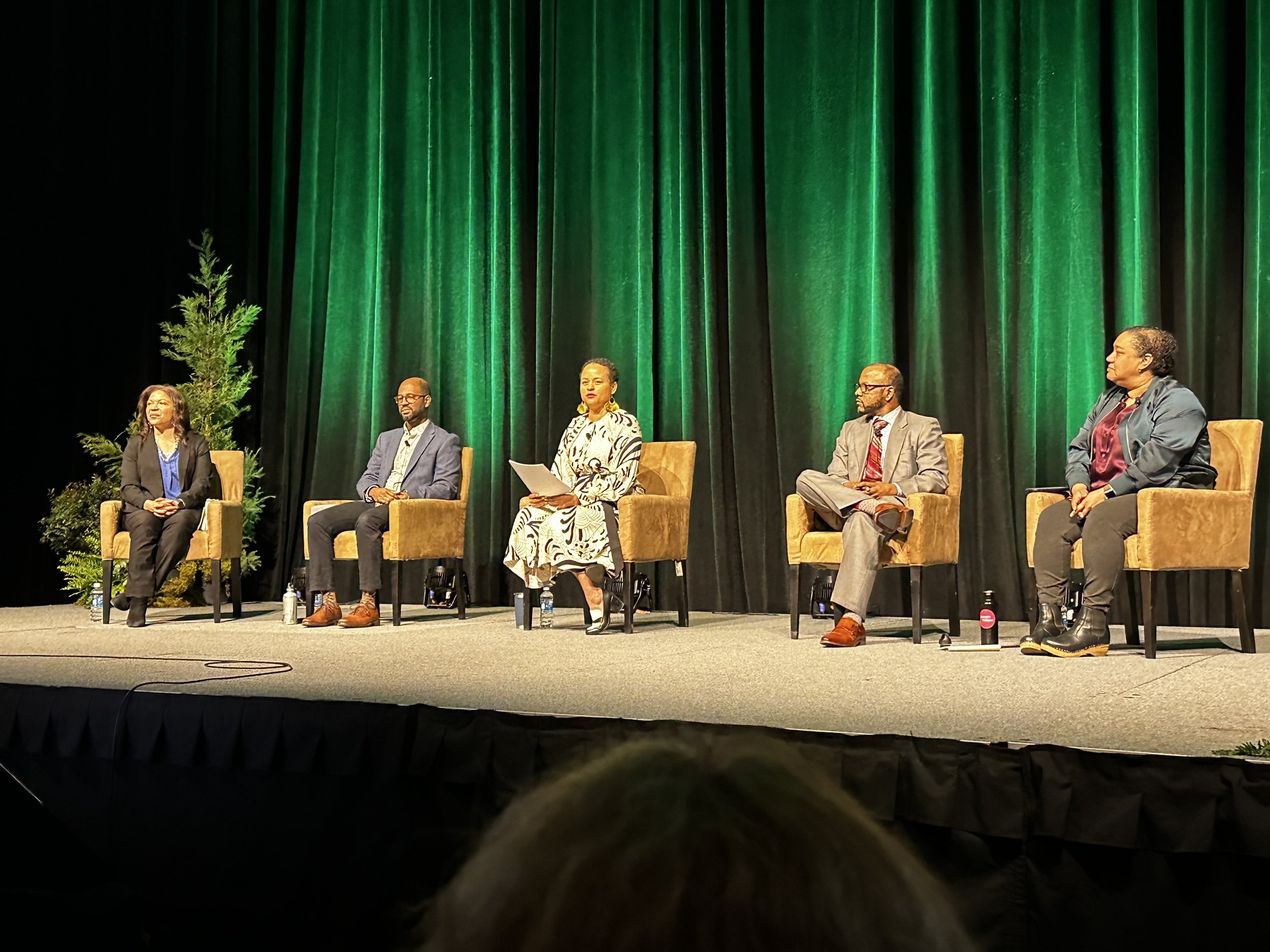Equity Takes Center Stage
April, 2023
The Architect’s Magazine
At the International Mass Timber Conference, held at the Oregon Convention Center in Portland from March 27 to 29, a mood of celebration filled the air as a series of overlapping communities came together to acknowledge and plan for mass timber’s growing (if still small) presence in mainstream construction.
While some industries may be struggling to attain pre-COVID attendance levels, according to Arnie Didier, cofounder of the International Mass Timber Conference and COO of the Forest Business Network, the International Mass Timber Conference “had just under 3,000 this year, almost double our 2019 numbers.”
The packed exhibit hall was a case in point. “There’s clearly a tide raising all ships,” said Dean Lewis, who directs mass timber and prefabrication for construction giant Skanska USA and has attended the conference since its outset in 2016, when there weren’t enough booths to fill the space. Now, however, “In this hall we’ve got fabricators, installers, suppliers. You’ve got people that sell the equipment, people that sell coatings. There’s even a glue booth.”
The opening keynote was a panel discussion about equity in mass timber and beyond hosted by Portland developer and U.S. Green Building Council board chair Anyeley Hallová. “Real estate development in the United States is almost exclusively white,” Hallová said, citing figures showing less than one percent of U.S. real estate developers are Black or Latinx, only 2 percent of licensed architects are Black (just 0.4 percent Black women), and 0.2 percent of construction companies are Black-owned. Yet the mass-timber movement’s relative newness in America means opportunity. “We can’t wait for something to move forward before we make it equitable,” panelist Chandra Robinson, LEVER Architecture principal, said. “We have to start with equitable practices.”

